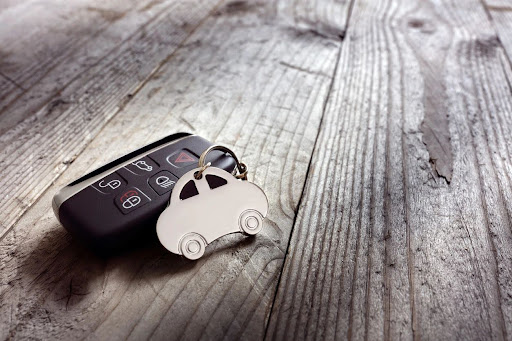Many people prefer muscle cars over conventional vehicles. Suppose the question is why; the answer revolves around performance. Muscle cars have powerful engines that make them a lot more reliable.
But to deliver their target performance, the cars need matching components. One such component is the high-force linear actuator. These motion devices work for different applications within muscle cars.
Here, we’ll look at some of the most common applications of these actuators. However, before then, let’s understand what they are and how they work.
What are High Force Linear Actuators?
You can look at high-force linear actuators as powerful devices that generate linear motion. Powerful – that’s the word that differentiates them from regular actuators. As a result, they’re ideal for applications that demand strength and precision.
Generally, actuators operate by converting motion from rotational to linear. But with high-force devices, the output is substantial such that they can accurately move heavy loads. Particularly, linear actuators can handle the force from 1lb to 2,000 lbs. High-force devices rank above the upper bound. They’re relatively common in various industrial and automotive settings.
Despite their high force, the motion devices are still simple to use. In fact, their basic components aren’t different from other less-powerful linear actuators. For instance, if you know how to replace an actuator, the same knowledge will work for high or low force devices. We can give a few examples of high force linear actuator applications. These include:
- Heavy-duty machinery
- Automation systems
- Specialized automotive applications
Their versatility enables them to provide force while maintaining accuracy. Our focus here is on muscle cars, which fits the third application from the above list. So, let’s narrow down on applying high force linear actuators in muscle cars.
Role of High Force Actuators in Muscle Cars
Due to their powerful engines, muscle cars use high force motion devices in different aspects. Below, we’ve highlighted five common ones.
1. Precision and Performance
High-force linear actuators are pivotal in enhancing the suspension systems of muscle cars. In other words, they help with superior handling and control. As they adjust the suspension parts with precision, the motion devices ensure better traction and stability. That is highly beneficial during high-speed settings. The result is a more responsive and solid driving experience — which every muscle car needs.
You’ll also find linear actuators customizing power seat adjustments in muscle cars. With the devices, drivers can tailor their driving position for perfection. That also optimizes comfort and control. For instance, they can adjust the seat height, tilt, or lumbar support. With such versatility, linear actuators help personalize driving experiences. They serve the ergonomic preferences of different drivers.
2. Engine Dynamics
When it comes to engine dynamics, high force actuators are present in two main areas. First, you see them in throttle control, where they ensure precise performance. Second, the motion devices enhance exhaust systems. The result is optimal output.
Let’s consider throttle control in muscle cars. In this application, actuators provide precise and rapid adjustments to the throttle mechanism. That optimizes the engine’s performance. Drivers will appreciate the enhanced responsiveness and acceleration. Without question, it’s a key factor in the dynamic driving experience of muscle cars.
Now, regarding exhaust systems. The emphasis is on actuators controlling exhaust components. Motion devices can enable efficient adjustments based on varying driving conditions. It not only boosts the engine performance. But it also helps achieve the powerful exhaust note system of muscle cars.
3. Transmission Systems
Advanced transmission systems are popular in today’s muscle cars. Within such systems, high force actuators aid with precision and efficiency. This is particularly true when shifting gears to ensure seamless transitions. As they control various transmission components, the motion devices boost performance and drivability.
However, there are more benefits to note. In muscle cars, high-force linear actuators foster accurate adjustments of transmission components. That can minimize lag and maximize the vehicle’s responsiveness. The result is a smooth and efficient gear-shifting process. Considering the dynamic nature of muscle cars, such an application is pivotal.
4. Safety and Comfort
On safety and comfort, we can highlight high force actuators in convertible muscle cars. Additionally, the devices are present in braking systems. Both aspects ensure driving is more secure and convenient.
In convertible roof mechanisms, the actuators allow seamless opening and closing. That’s thanks to their precision and strength. With reliable and smooth transitions, users get convenience. There’s no argument that it’ll boost the convertible driving experience.
Regarding braking systems, the application is simple yet highly effective. With high-force linear actuators, the systems become more responsive. In other words, they’ll be more efficient. Notably, optimizing the brake alone can go a long way in improving overall safety.
5. Customization and Aesthetics
Muscle cars are known for their broad, boxy shape. However, some of these vehicles still flaunt unique designs. Also, modern ones have more features for aesthetics. In both aspects, high force linear actuators can help.
First, let’s consider customization in muscle cars. The advantage here is that the motion devices are versatile. So, they allow automotive designers to implement unique and innovative features. Whatever it is, linear actuators can integrate.
Such flexibility also improves the appeal of muscle vehicles. Consider the motion devices working in door mechanisms or specialized compartments. Whichever, there’s customization and also aesthetics.
Another notable application is in customized lighting and similar accessories. In conventional vehicles, regular actuators help improve these components. It’s the same with high force motion devices in muscle cars.
The actuators mean drivers can tailor the visual elements of muscle cars to suit individual preferences. Such a high level of customization enhances the overall aesthetics. At the same time, it allows users to express their style through their vehicles.
Conclusion
High force linear actuators in muscle cars handle many functions. We’ve discussed some common applications in this article, but many others still exist. The motion devices are versatile, so they can more or less work anywhere linear travel is needed. Thanks to their reliability, they improve performance and convenience. Both work in favor of drivers and the vehicle.



